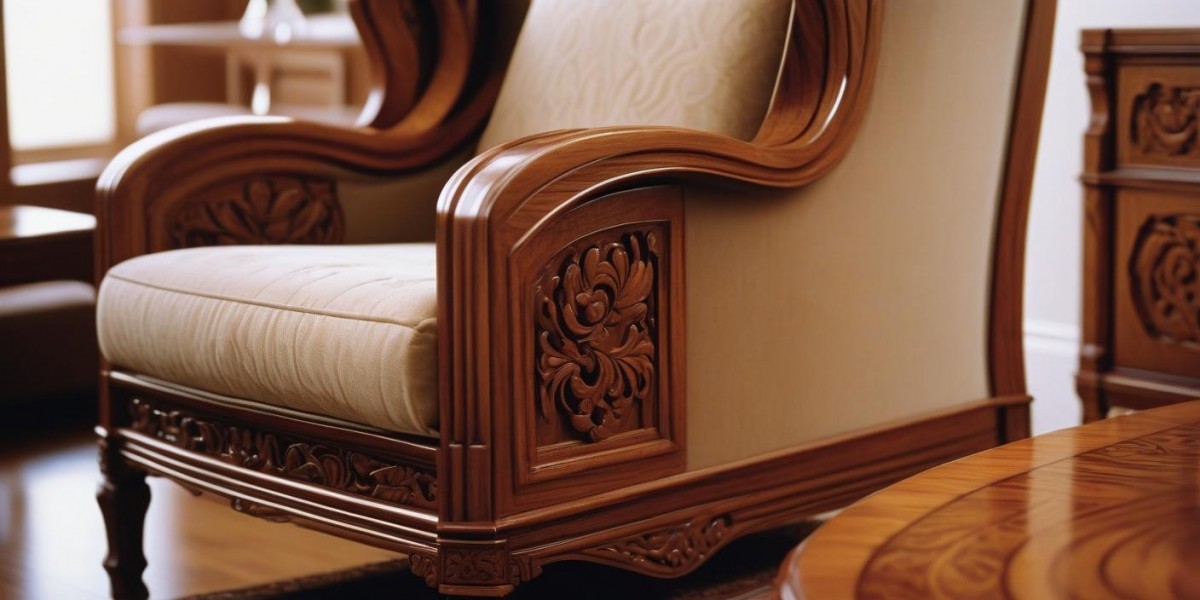When shopping for furniture, identifying quality construction is essential to ensure longevity, value for money, and style. High-quality furniture not only enhances the aesthetics of your home but also stands the test of time. This guide will help you discern the hallmarks of well-constructed furniture and make informed decisions.
1. Understand the Importance of Quality Materials
The foundation of well-constructed furniture lies in its materials. Quality materials, such as solid hardwoods (e.g., oak, walnut, or mahogany), indicate durability and strength. Unlike particleboard or MDF (medium-density fiberboard), solid wood resists warping, scratches, and general wear. For upholstery, materials like top-grain leather and high-performance fabrics ensure longevity.
Pay attention to veneers—thin wood layers glued onto lesser materials. While veneers can mimic solid wood, they often compromise durability. Natural, eco-friendly options like bamboo are also gaining popularity for sustainability. Always feel the furniture to gauge weight and texture; heavier pieces often signify solid construction. By knowing the materials, you can judge whether the furniture will meet your needs and withstand daily use.
2. Inspect Joints and Fastenings
The strength of furniture depends significantly on its joints and fastenings. High-quality furniture avoids nails, staples, or visible glue in its construction. Instead, it uses sturdy joinery methods like dovetail joints, mortise-and-tenon, or dowels. These techniques enhance stability and ensure the furniture holds up under stress.
Look under tables, chairs, and drawers to examine how parts are connected. Screws and brackets should be tight, with no wobbles or gaps. Reinforced corner blocks on sofas and couches add extra stability, while wooden dowels in drawers prevent loosening over time. Poorly joined pieces might look appealing but are unlikely to last. Take time to assess this detail—it’s a vital indicator of construction quality.
3. Evaluate the Finish and Detailing
The finish of furniture not only determines its appearance but also reflects the care taken during manufacturing. A smooth, even finish—whether it’s stained, painted, or lacquered—shows attention to detail. Run your hand across surfaces to ensure there are no rough spots, bubbles, or inconsistencies.
For wood furniture, check if the stain highlights the grain rather than concealing flaws. Matte finishes often mask imperfections better, while glossy finishes work best with flawless craftsmanship. On upholstered furniture, inspect seams and stitching; uneven or loose threads are red flags. Quality detailing ensures that furniture not only looks good but also lasts longer without cracking or peeling.
4. Test for Stability and Comfort
Even the most elegant furniture can be worthless if it lacks stability or comfort. Test chairs and sofas by sitting on them. They should feel sturdy and supportive without creaks or wobbling. For center table and cabinet, gently shake them to check for movement. Solid pieces should remain stable.
Cushioning is another critical factor. High-resilience foam or memory foam cushions maintain shape over time, unlike cheaper polyfoam. Springs in seating should be evenly spaced and provide firm support. A simple push test can reveal squeaky or misaligned springs. Comfort and stability are key attributes of furniture worth investing in.
5. Assess Drawer and Door Mechanisms
Drawers and cabinet doors are integral parts of many furniture pieces, and their operation reflects overall construction quality. Pull out drawers fully to check for smooth gliding. Drawers with ball-bearing glides or wooden runners are ideal as they open and close effortlessly without sticking.
For cabinet doors, hinges should be strong and open quietly without sagging or misalignment. Soft-close mechanisms, though more expensive, signal premium construction. Poorly functioning drawers and doors are often indicative of rushed craftsmanship or inferior materials. Ensuring these components work flawlessly guarantees long-term satisfaction.
6. Examine Upholstery and Padding
For upholstered furniture, quality lies in the fabric and the padding beneath it. Begin by inspecting the fabric—high-quality materials like linen, cotton, or leather resist wear and tear better than synthetics. Patterns and weaves should align consistently, reflecting meticulous craftsmanship.
Padding plays a crucial role in comfort. It should be evenly distributed, with no lumps or sags. High-density foam cushions and supportive padding layers ensure durability. For added assurance, look for furniture labeled with certifications like CertiPUR-US®, which verifies the safety and performance of foam materials. Skipping this inspection can lead to uncomfortable and short-lived purchases.
7. Check Manufacturer Reputation
Quality furniture often comes from reputable manufacturers with a history of excellence. Research the brand’s reputation by reading customer reviews and seeking third-party certifications. Many top manufacturers provide warranties, a sign of confidence in their products.
Visit showrooms to explore the construction process and ask questions about materials and techniques. Trusted brands also adhere to environmental standards, offering eco-friendly and ethically sourced products. By choosing furniture from a reputable source, you reduce the risk of buying substandard pieces.
8. Avoid Oversized or Misleading Discounts
Deep discounts can sometimes mask low-quality construction. While sales can be enticing, especially during clearance events, inspect the furniture rigorously before purchase. Cheap furniture often uses subpar materials, and the cost savings can come at the expense of durability and safety.
Price should correlate with quality. High-quality furniture may have a steeper upfront cost, but it’s a long-term investment. To identify fair pricing, compare similar products across multiple brands. A careful balance of budget and quality ensures you make a smart purchase without falling for misleading offers.
9. Focus on Sustainability
In today’s world, sustainability is a growing concern among furniture buyers. Quality furniture often involves eco-friendly practices, such as using FSC-certified wood or recycled materials. These pieces not only contribute to a greener planet but also reflect careful construction.
Avoid furniture with synthetic adhesives or finishes that emit harmful VOCs (volatile organic compounds). Opt for pieces crafted by artisans or brands known for sustainable practices. Sustainable furniture often combines quality with responsibility, offering long-lasting appeal while reducing your environmental impact.
10. Consider Customization Options
Furniture with customization options often signals quality craftsmanship. Custom pieces allow you to select preferred materials, finishes, and styles, ensuring they meet your specific needs. These options typically come from manufacturers committed to personalized attention, a hallmark of quality.
Customization also gives insight into construction methods. For example, brands that offer tailored dimensions or modular features often use premium materials and meticulous craftsmanship. While customization may cost more, it guarantees a perfect fit and higher satisfaction.
Conclusion
Identifying quality furniture construction requires a keen eye for materials, craftsmanship, and functionality. By following these guidelines, you can invest in pieces that offer durability, style, and comfort for years. Always prioritize trusted brands, inspect joints and finishes, and test stability before making a purchase. With careful evaluation, you’ll confidently select furniture that enhances your home and lifestyle.
































